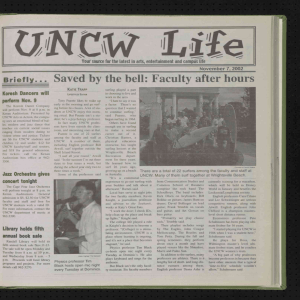Communication Skills and Strategies for Sharing the Vision
advertisement
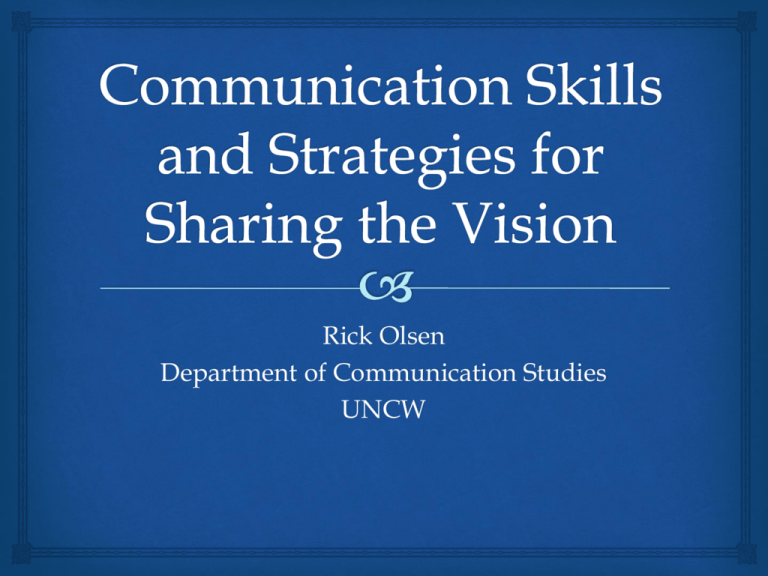
Rick Olsen Department of Communication Studies UNCW Over the Next Hour . . . Complicate communication Practical principles Discussion of your issues and interests Useful take aways But first . . . Forte Profile Drawing! Need business card with accurate email address We’ll pick multiple winners You’ll take the profile and get an interaction report between you and the other winners What’s Your Problem?!?! Respond to one or more of the following prompts: The biggest communication challenge for me as a practitioner is . . . . The biggest communication challenge I encounter within my organization is . . . . The one question I want answered for me by the end of this session is . . . . . There is no persuasion, there is only selfpersuasion. Communication Popular Transfer of meaning Linear: from me to you Tool or instrument Act Sophisticated Co-create meanings Patterns of interaction Use Being Communication as Use Live in a world of meaning not things Social construction of reality Leaders must be language leaders Human and natural activity and artifacts always have communicative dimensions Communication and Patterns Dialectics Real yet Ideal Autonomy yet togetherness Predictability yet novelty Openness yet closedness And MORE Either Or Both And Example Profitability Protection Communication and Use Unwanted repetitive patterns (URPs) Constitutive “rules” (interpretation) Regulative “rules” (response) Loops and patterns! Reactions To Reactions Application Review the issues your raised on your cards earlier Are any explained by an ongoing dialectic tension that must be managed with self-awareness rather than “solved” once and for all? Can you name the poles of the tension? (both poles must be either positive or negative) Are any explained by URP? What are the explicit or implicit rules that contribute to the loop? Is it a charmed loop or a strange loop (sustained by contradictory meanings) Take Aways Seek to explore meanings that are operating in a given situation Circular Questioning “What do you mean by ____?” Seek to distinguish between communication challenges to “solve” and those that can only be managed through greater awareness and skill Help participants see social construction as empowering: change world by changing a word Centrality of Communication to Advocacy “[rhetoric is] the faculty of observing in any given case, all of the available means of persuasion.” ~ Aristotle Five Canons Cicero, like most Romans, came along and systematized the Greek work on rhetoric. Invention The discovery and clarification of your goals, content, “angles” and exigency. Create a mood? Alter perceptions Explain and inform Initiate action Maintain action Arrangement Strategic arrangement of content based on analysis of the issues, the audience, the context and the goals. With hostile audiences one typically leads with strongest argument and ends with second strongest argument. Tip: The Four Ss Signpost: let your audience know where you are in your sequence of ideas. State: clearly state your current idea. Support: offer data, examples, images, stories to illuminate that idea Summarize: remind audience how this specific idea connects with the whole of your argument Style “Fitting the proper language to the invented material” ~ Cicero Audience? Context? Decorum: What are the cultural/sub-cultural expectations? Memory Firm mental grasp of the subject matter and the specific content of the upcoming message. Subject matter Message Communication principles Delivery Ability to perform the plan. The effective use of communication resources to pursue your strategic goals. Verbal and Nonverbal communication choices Images, media and technology Responses to questions Review and Hope . . . Invention Style Arrangement Memory Delivery A Bit More About Delivery Writing must be typo free Put pressure on your writing to be “polished.” Put pressure on your speaking to be “real.” Oral delivery should be conversational Model the mood—your audience is a mirror Write or speak to one person Application Which of the five canons do you struggle with most? Do you overwhelm audience with facts and content Do you struggle to create coherent path through your content Do you have a plan but seem to fail to deliver the plan? A Useful Template Motivated Sequence Attention: emotional engagement Need: cognitive engagement Satisfaction: solution Visualization: narrative of future with and/or without the solution in place Action: what THIS audience can do to help bring about the solution. Simple Example Your Turn! Motivated Sequence Attention: emotional engagement Need: cognitive engagement Satisfaction: solution Visualization: narrative of future with and/or without the solution in place Action: what THIS audience can do to help bring about the solution. Forte Profile Drawing! Your Turn! Motivated Sequence Attention: emotional engagement Need: cognitive engagement Satisfaction: solution Visualization: narrative of future with and/or without the solution in place Action: what THIS audience can do to help bring about the solution. And so it goes . . . “In this business, you can never wash the dinner dishes and say they are done. You have to keep doing them constantly." -- Mary Wells Lawrence, member, Advertising Hall of Fame Rick Olsen, Ph.D. UNCW Department of Communication Studies olsenr@uncw.edu

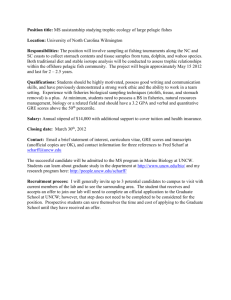

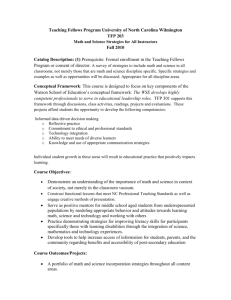

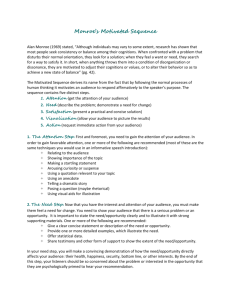
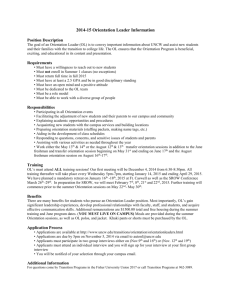
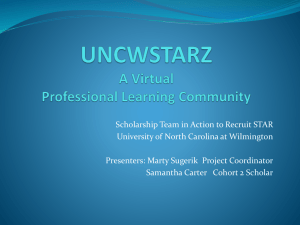
![Word Study [1 class hour]](http://s3.studylib.net/store/data/007905774_2-53b71d303720cf6608aea934a43e9f05-300x300.png)


